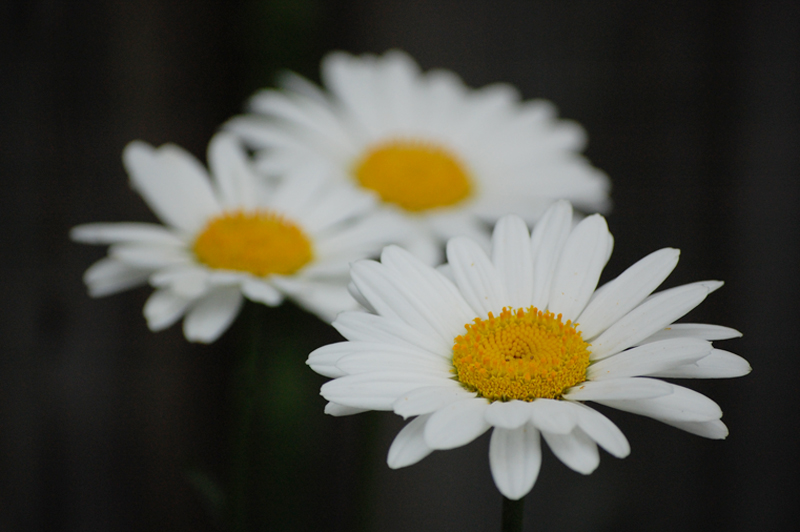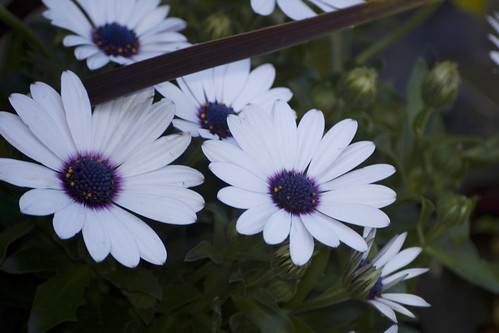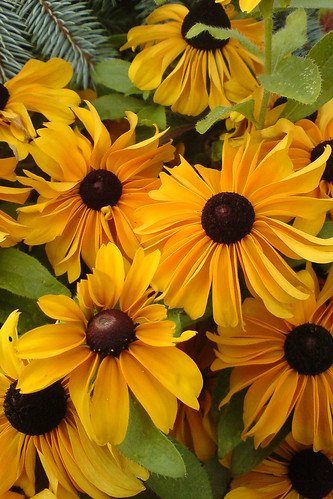
'Becky' Shasta Daisy (Leucanthemum x superbum 'Becky')
The most obvious shared characteristic of plants of this family are their flowers which are a form of raceme that looks on the whole to be a single flower (the "petals" are bracts and the center of the flower head is actually a large number of flowers. The "flowers" are generally long lasting since the actual flowers open in sequence over several days while the bracts hold on to attract pollinators throughout this period giving the overall impression of long lasting individual flowers that these plants are well known for.

Osteospermum cv.
Most plants from this family are also sun lovers and many are at least somewhat drought tolerant. Colours and sizes vary a great deal though ranging from under a foot (Gaillardia 'Arizona Sun' & Leucanthemum x superbum 'Snowcap') to the 8-10' tall monster Sunflowers (Helianthus annuus). Colours seem to have traditionally been yellow, orange, and red heavy but now there are few colours you can't find, especially within the newest coneflower cultivars (even/especially) within the past decade. Generally you will see these plants flowering later in the summer but they tend to last a long time (well into fall) so that sort of makes up for spring.

Helenium 'Mardi Gras'
While most of these that are readily available as garden plants do not spread rapidly (forming clumps instead) they seem to have no problem seeding themselves so be careful of that! The ones considered weeds are well known for being difficult to get rid of because of a combination of readily coming back from deep roots (Dandelions, Taraxacum officinale) and seeding everywhere (Dandelions again - wikipedia says the seeds can remain viable for up to nine years).
Deadheading does wonders at extending their flowering time and cuts out the risk of seedlings popping up and as long as you've got time for it will give you the best results. In the case of dandelions a lawnmower can be handy for deadheading them.

Rudbeckia hirta


No comments:
Post a Comment